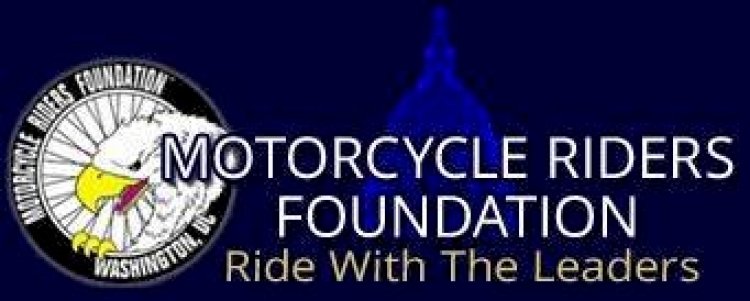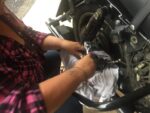- arrow_back Home
- keyboard_arrow_right On the Road
Things the Non-Motorcycle Public should know.
On the Road Karla Weinbrenner July 24, 2024

Things the Non-Motorcycle Public should know.
From the MRF some things the Non-motorcycle public should know about motorcycles.
As riders we understand the dangers involved in doing what we do but sometimes the other motoring public do not. So today, I borrowed this information form the MSF (Motorcycle Safety
Foundation). This is a list of 10 things you should share with the non-motorcycle pubic. Because you see the issues, you can do things to help combat them. Please feel free to put this out on
Facebook or other social media. But please site that it came from the MSF.
QUICK TIPS: Ten Things All Car; Truck Drivers Should Know About Motorcycles
1. Over half of all fatal motorcycle crashes involve another vehicle. Most of the time, the car or truck driver, not the motorcyclist, is at fault. There are a lot more cars and trucks than
motorcycles on the road, and some drivers don’t “recognize” a motorcycle – they ignore it (usually unintentionally).
2. Because of its narrow profile, a motorcycle can be easily hidden in a car’s blind spots (door/roof pillars) or masked by objects or backgrounds outside a car (bushes, fences, bridges,
etc.). Take an extra moment to look for motorcycles, whether you’re changing lanes or turning at intersections.
3. Because of its small size, a motorcycle may look farther away than it is. It may also be difficult to judge a motorcycle’s speed. When checking traffic to turn at an intersection or into (or out
of) a driveway, predict a motorcycle is closer than it looks.
4. Motorcyclists often slow by downshifting or merely rolling off the throttle, thus not activating the brake light. Allow more following distance, say 3 or 4 seconds. At intersections, predict a
motorcyclist may slow down without visual warning.
5. Motorcyclists often adjust position within a lane to be seen more easily and to minimize the effects of road debris, passing vehicles, and wind. Understand that motorcyclists adjust lane
position for a purpose, not to be reckless or show off or to allow you to share the lane with them.
6. Turn signals on a motorcycle usually are not self-canceling, thus some riders (especially beginners) sometimes forget to turn them off after a turn or lane change. Make sure a
motorcycle’s signal is for real.
7. Maneuverability is one of a motorcycle’s better characteristics, especially at slower speeds and with good road conditions, but don’t expect a motorcyclist to always be able to dodge out
of the way.
8. Stopping distance for motorcycles is nearly the same as for cars, but slippery pavement makes stopping quickly difficult. Allow more following distance behind a motorcycle because
you can’t always stop “on a dime”.
9. When a motorcycle is in motion, see more than the motorcycle – see the person under the helmet, who could be your friend, neighbor, or relative.
10. If a driver crashes into a motorcyclist, bicyclist, or pedestrian and causes serious injury, the driver will likely never forgive himself/herself.
The following is my personal thoughts on how to combat these 10 things to help you as you
ride.
Love, Fire Dog:
1. Try to make eye contact before making turns or moving through an intersection so you know the other drivers are aware of you. Also be prepared to stop or take evasive action all the time.
2. Learn where most blind spots are and try to stay out of them when riding.
3. Slow down when you come to an intersection and see that cars have stopped. Slowing down gives you more time to react if the cars do move.
4. There is a new break light on the market that automatically activates when you slow down without you touching the brake. You can also use hand signals showing those behind you that
you are slowing down.
5. For this one, I suggest you don’t move around the lane to show off or being reckless. You don’t want to be “One of those bikers…”
6. Use Hand Signals – that way other drivers know you really are making a move.
7. Practice you Maneuverability. Bike Games and Safety classes are wonderful times to sharpen your skills. With the starts of a new riding season, find an empty parking lot and run through
some practice exercises to get you back in the swing after a long winter.
8. Improve your reaction time by scanning ahead of you when riding. Look for brake lights farther up in the traffic. This gives you the ability to start slowing down and not having to slam
on the brakes.
9. Be a good example of a motorcyclist. Don’t be “That Biker” that pisses everyone one off by weaving in and out of traffic and cutting people off. When you become “That Biker” you upset
the other drivers on the road who probably won’t care what happens to you.
10. This is true but remember: you can’t expect them to look for you on the road! You have to do as much as you can for yourself so that you have a safe ride. You choose to ride a
motorcycle: you have a responsibility as well.
Copyright 2025 Leather & Lace MC - All Rights Reserved.


